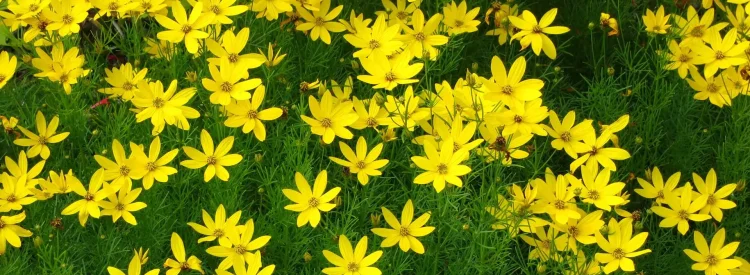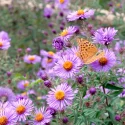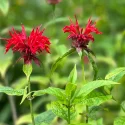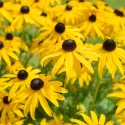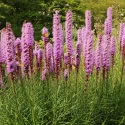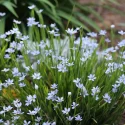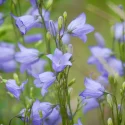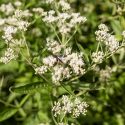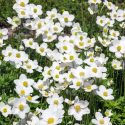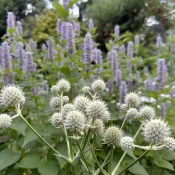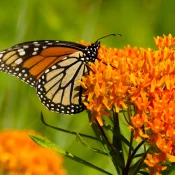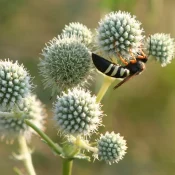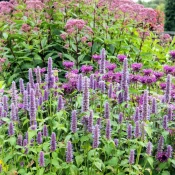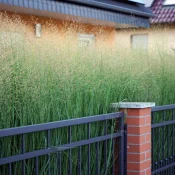These tough-as-nails native flowers can take it all—full sun, part sun, drought—and return dozens of bright blooms. Coreopsis comes from its genus name (Coreopsis) and is sometimes known by the terrible common name Tickseed. They are perfect native flowers for beginner gardens because they’re so easy to grow. Many species are short (1-2 feet high), making them great for borders. There are around 100 species within the Coreopsis genus that all come from either North, Central, or South America—pick one (or a few!)

As mentioned in our intro, the Coreopsis genus includes around 100 plants, which all come from parts of North, Central, or South America. The good news is that if you’re looking to plant native, find a plant with the name Coreopsis to be almost guaranteed to find a native flower. Now, let’s dig into the name, meet different species, and find inspiration on where to plant these flowers.
First off, let’s talk about its terrible common name:
Tickseed.
Why is it called Tickseed?
Coreopsis is this plant’s Latin Genus name, but it also has the strange common name Tickseed. The reason has nothing to do with attracting ticks! The common name Tickseed comes from the shape of the plant’s seed, which looks like a tiny black tick.
So, to say it plainly, Tickseed does NOT attract ticks. This plant only attracts bugs like pollinators, who come for its blooms. To help get past this unfortunate common name, we will call this plant Coreopsis for the rest of this article.
What are the benefits of planting Coreopsis?
Coreopsis is an easy-to-plant flower known for its bright blooms. Its cheerful, daisy-like flowers come in Crayola-bright colors, including yellow, orange, and pink, instantly brightening any landscape. Coreopsis is perfect for pollinator gardens; butterflies and bees visit its flowers.
Coreopsis is a native flower
Another benefit of Coreopsis is that, depending on where you live, there is a native Coreopsis species for you.
Native plants have grown in an area for thousands of years, through every drought, weather event, and season. Their DNA is hands-down best suited for your home area. No lawn or non-native plant can beat their resiliency.
New to native?
Before lawns and landscaping, native plants were here. They’ve fed birds, bees, and butterflies for thousands of years—and they’ll do the same in your yard. The best part? They’re easier to grow than you think.
Most Coreopsis species are drought-tolerant
Another advantage of Coreopsis is its adaptability to different growing conditions. Many species are known for their tolerance to drought, making them an excellent choice for water-wise gardens or regions with dry summers. Like most native plants, Coreopsis is relatively low-maintenance once established, requiring minimal care and attention—especially compared to lawns!
Now that we’ve discussed the benefits, let’s meet some of the species of Coreopsis perfect for your garden:
Types of native Tickseed / Coreopsis
These native varieties all once thrived on Midwestern prairies. They all like full sun.
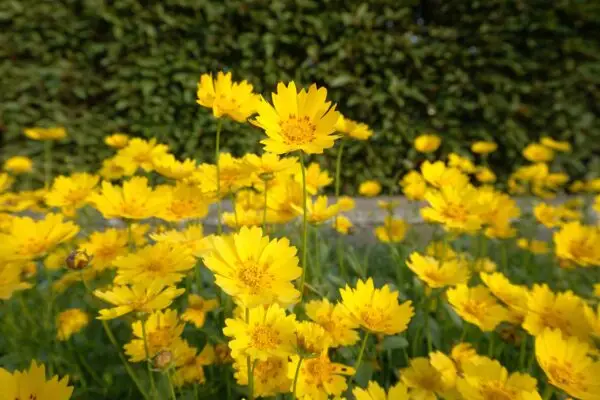
Lance-leaf Coreopsis
Coreopsis lanceolata
This is a very easy-to-grow flower; all it needs is deadheading to keep it flowering. (Scroll on to find out what ‘deadheading’ means.) Full sun, and short (perfect for borders!) 1-2 feet tall.
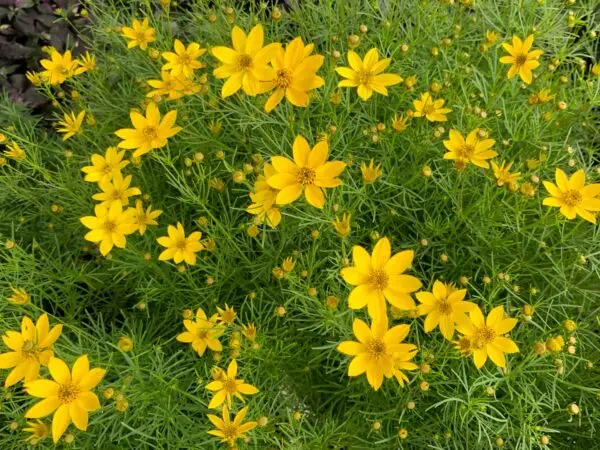
Stiff Coreopsis
Coreopsis palmata
This bright yellow native flower grows in some of the toughest situations: full sun and dry spots. It grows 2-3 feet high.
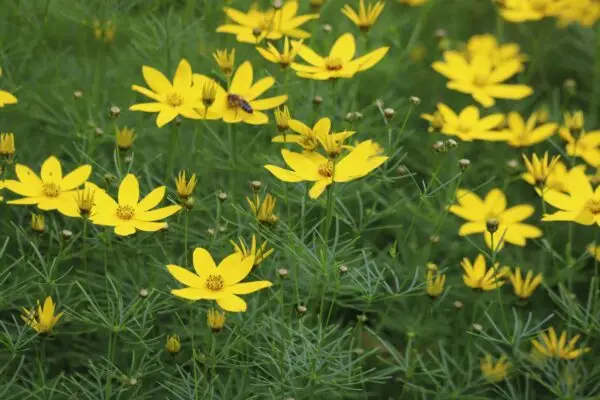
Threadleaf Coreopsis
Coreopsis verticillata
Threadleaf can spread quickly, making it good for large spaces but not small ones. In Patricia A. Taylor’s excellent book “Easy Care Native Plants” she writes, “You can also enjoy this plant if you have dry, difficult spots or need to cover a large planting area. Do not, as I did, place it in a small garden with good soil; in that situation, it becomes a takeover plant.”
Seen another color of Coreopsis?
You may have seen other versions of this plant and wondered—are those Coreopsis? If you’ve seen other colors, they are probably Coreopsis cultivars.
Coreopsis / Tickseed cultivars
A cultivar is a plant that has been curated by humans for desirable traits, whether its color, drought resistance, or height. Coreopsis has been bred for generations to have different colors, petal shapes, and heights.
Planting native plants is always the best choice for our gardens; see above for true native coreopsis options. Here are some Coreopsis cultivars you may encounter in nurseries:
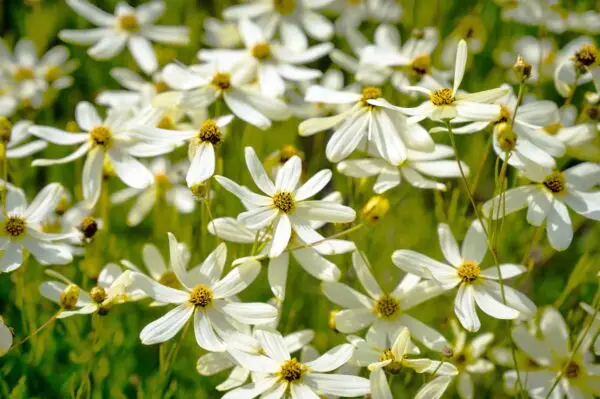
Coreopsis ‘Moonbeam’
Moonbeam is one of the most widespread cultivars, offering pale yellow blooms. This plant has been bred to keep flowering without deadheading.
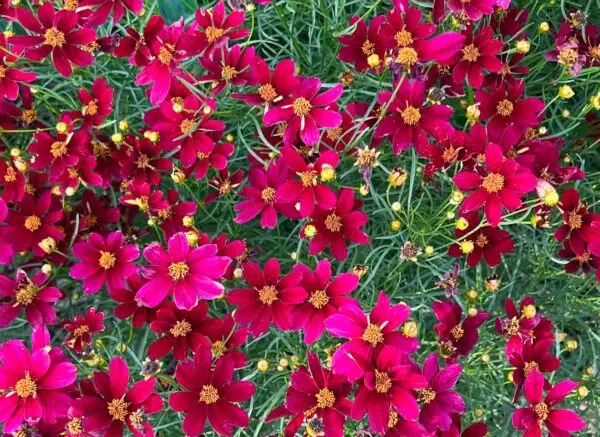
Coreopsis ‘Mercury Rising’
This coreopsis cultivar offers an entirely new color palette, with dark reddish-pink petals.
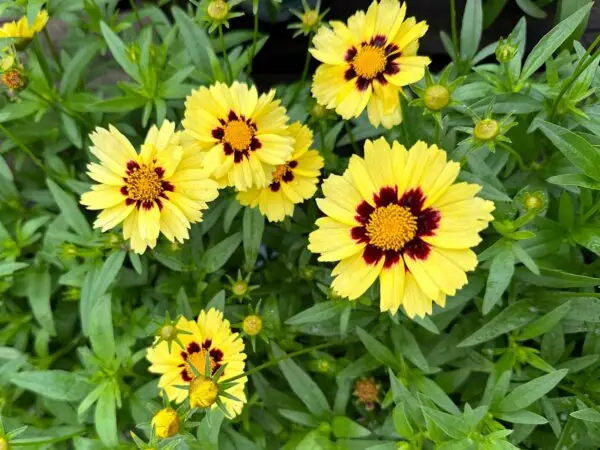
Coreopsis ‘Cream and Red’
Other coreopsis cultivars introduce secondary colors, like the ‘Cream and Red’ nativar.
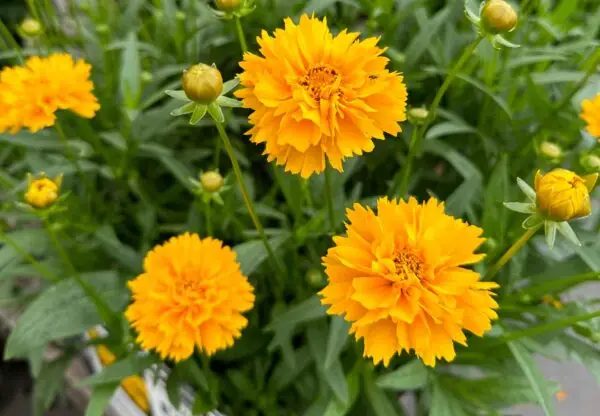
Coreopsis ‘Early Sunrise’
While the cultivar ‘Early Sunrise’ puts out multi-layered blossoms that look like cut-paper sculptures.
Native Coreopsis vs. cultivar Coreopsis—does it matter?
You may be wondering if cultivars are “bad” or OK for gardening; you may have even read an online discussion about them. While the science is still emerging, we know one thing: actual native plants have been around for thousands of years. Some cultivars have only been around for a season or two!
Which is why The Plant Native encourages the following:
What is a cultivar?
Cultivar is short for CULTIvated VARieties. Cultivars are plants selected for traits like color, size, or disease resistance. Useful and sometimes stunning...but some lose the scent, shape, or timing wildlife depends on. Plant straight species when possible.
Now let’s dig into places to plant these beautiful native flowers.
Where to plant Coreopsis
Coreopsis is perfect for borders. It stays short and its bright flowers are a welcome edging.
Plant Coreopsis in the front of gardens and in borders with taller native plants behind, like Bee Balm, Coneflower, Rattlesnake Master, and Aster.
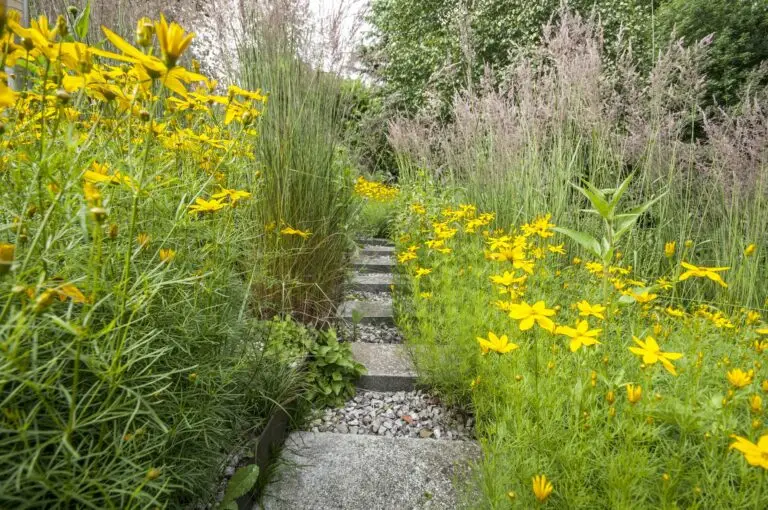
The famous plant nursery White Flower Farm in Connecticut has a good overview video, with inspiration on where to plant Coreopsis:
What are good pairings for Coreopsis?
Great pairings for Coreopsis include Black-Eyed Susans, Asters, Rattlesnake Master, coneflowers, and milkweed. All these native plants that like the full sun that Coreopsis does.
A good way to plan a garden is to pick plants that flower at different times so that your garden always looks amazing and pollinators always have food. Here are pairing inspirations, organized by flowering season:
Native plants for the spring
Native plants for the summer
Now you know the benefits of adding Coreopsis to your Northeast, Mid-Atlantic, Midwest, or Southern garden! These carefree flowers have an exceptionally long bloom time (especially when deadheaded), offering lots of support for pollinators. They are shorter flowers, perfect for borders, or placed in front of medium-height or taller natives like False Blue Indigo, Rattlesnake Master, or late-blooming favorite asters. Happy planting!
Sources
- Taylor, Patricia A. Easy Care Native Plants. (1996), 245-246.
- Nelson, Gil. Best Native Plants for Southern Gardens: A Handbook for Gardeners, Homeowners, and Professionals, (2010).
- Harstad, Carolyn. Go Native! Gardening with Native Plants and Wildflowers in the Lower Midwest. (1999), 209-210.
What if your feed was actually good for your mental health?
Give your algorithm a breath of fresh air and follow us.
